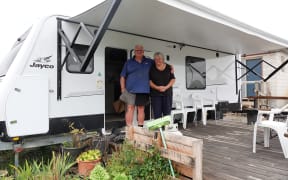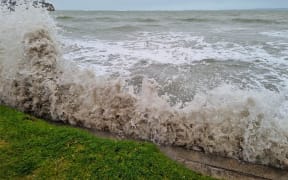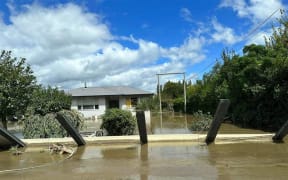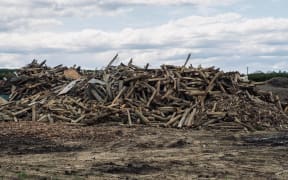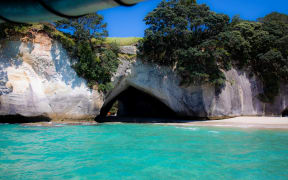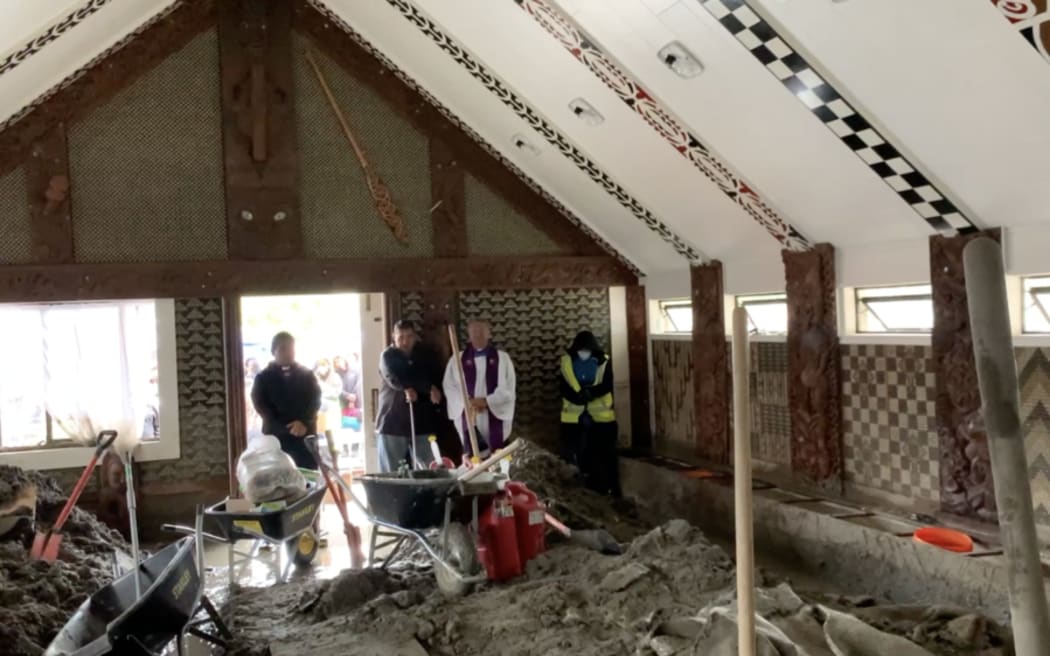
The marae was devastated by the force of Cyclone Gabrielle. Photo: Supplied / Tangoio Marae
Whānau from a marae north of Napier are still in limbo about the future of their devastated land, a year after Cyclone Gabrielle swept through the area.
Tangoio Marae in Te-Matau-a-Maui was left blanketed with 2.5 metres of silt when Gabrielle hit a year ago today, after the river behind it breached its banks, sweeping logs into buildings.
The clean-up took months but the marae still can't be used.
Whānau can't have tangihanga and grieve on their own whenua, and marae chair Hori Reti says it was hard to find alternative places to gather.
"Not only is this a gathering place for tangihana, it's also a gathering place for memorials, for special occasions within families for wāngana. It's a place of learning and so those are all of the losses that we as a people are placed with. It's truly, sadly devastating," Reti said.
Whānau were dealt another blow last year when the government placed the whenua into category three of its cyclone recovery plan, meaning the marae can not be rebuilt.
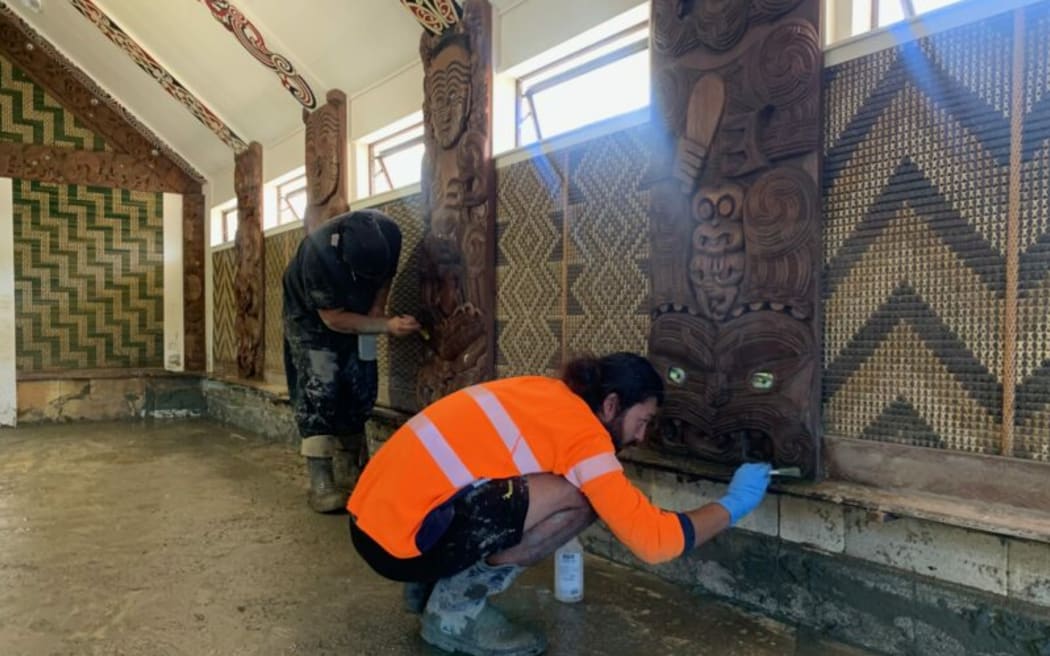
The clean-up of the marae took months, but it still can not be used. Photo: Supplied / Tangoio Marae
Reti said they were frustrated that very little has been done through the Kaupapa Māori Pathway.
The pathway encourages the government to talk to Māori landowners about developing their whenua according to Māori custom.
He wanted the government to make a commitment to helping them restore and develop their land.
"If general land owners are starting their process within the buy-out process and that was agreed to by the crown six months ago, we would like to see that the process for Māori and Māori landowners is prioritised the same," Reti said.
Ngāti Kahungunu chair Bayden Barber said whānau were in a better position than they were a year ago, but the question of relocating Tangoio Marae still weighed heavy.
He said it was a difficult decision to make and whānau did not want to leave their whenua, but they may not have much of a choice.
"To be able to relocate with in their rohinga, within their hapū boundaries so that they can still have that connection to their place and to their whakapapa, so yeah those questions still need to be answered. Where would that land be," Barber said.
But Reti said relocation isn't a possibility - 110,000 hectares of iwi land was confiscated in 1866 and the land the marae is on is all that's left.
Building somewhere else would mean whānau wouldn't have any connection back to the whenua.
'Whanau can respond'
Further up the East Coast, Civil Defence co-ordinator Lillian Te Hau-Ward is determined that whānau will stay put in Tokomaru Bay.
There's work to make communities more resilient by introducing solar power to marae there and in Ruatoria.
She has also been helping Te Puia Springs build a community facility since it's the only place in Te Tai Rawhiti without a marae.
"So that they can run all their civil defence responses and cook for the community out of that building. I've been working with a company up in Auckland to design off grid buildings so that they can be civil defence response buildings, they could actually be homes for whanau," Te Hau-Ward said.
Cyclone Gabrielle has prompted wāngana to educate whānau on preparing for severe weather.
This includes first aid courses for people in areas that become isolated.
"They are hoping that they will get one person from every household just so that if there's any self emergency, at least initially whanau can respond until real help gets there," Te Hau-Ward said.

